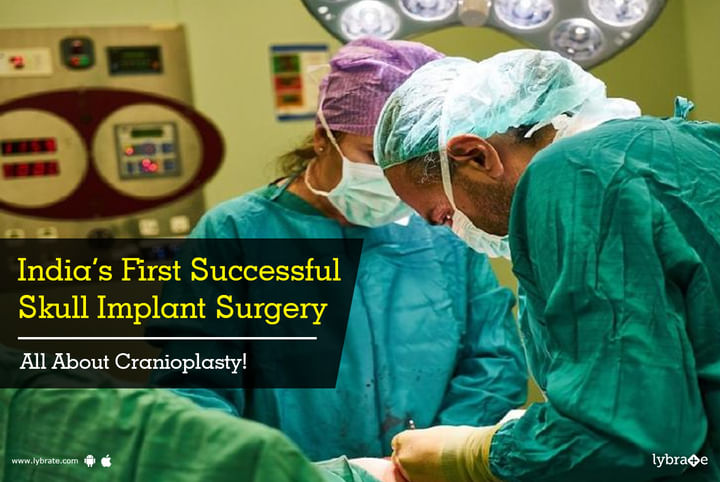India's First Successful Skull Implant Surgery - All About Cranioplasty!
A few Pune-based doctors have created history by successfully replacing 60 per cent of a four-year-old girl’s damaged skull with a specially-made customised three-dimensional polyethylene bone.
This was reportedly the first ever skull implant surgery (also known as Cranioplasty) carried out in India. The 3D bone was made by a US-based firm as per the exact measurements and shape of the skull defect, which the little girl had sustained in a deadly car accident about a year ago.
What is Cranioplasty?
It is a surgical procedure which is followed to repair any defect or deformity in the skull. This defect or deformity could be congenital, a result of an accident or an injury sustained in the previous surgery involving the skull.
Types of Cranioplasty:
There are various types of cranioplasties, but in almost everyone of them, the doctors lift the scalp and restore the contour of the skull with the original skull piece or a custom contoured graft made from materials such as:
- Titanium (plate or mesh)
- Synthetic bone substitute
- Acrylic (prefabricated or moulded at the time of surgery)
These surgeries can be divided mainly into two parts:
Conventional Cranioplasty:
In the conventional cranioplasty methods, the doctors peel back all five layers of the scalp and place the bone remnant or custom implant in the proper cranial location.
Pericranial-Onlay Cranioplasty:
It is a new technique in which the surgeon pulls back the three uppermost layers of the scalp and places an implant in between the third and fourth layers.
Reasons for undertaking Cranioplasty:
- To secure the brain: In certain cases, a cranial defect may leave brain in a vulnerable situation where it might sustain deadly injuries.
- Improving the functioning: Cranioplasty may also improve the neurological functioning of some patients.
- Aesthetics: A skull defect can affect the appearance and confidence of the patient.
- Headaches: It may also help in reducing the frequency of headaches caused due to previous surgery or injury.
Cranioplasty Procedure:
The surgeons shave the area of incision and prepare it with antiseptic. They also ensure that the rest of the head is draped, leaving only the surgical area exposed.
Then an anesthetic is given to the patient and the surgeon cuts the skin of the scalp and gently separates it into layers. The process eventually shields the dura, which covers the brain.
The surgeon cleans the edges of surrounding bone and prepares the surface so that the implant can be positioned appropriately in the defected area. Subsequently, it is secured to the cranial bones with screws, plates or both.
After placing the implant, the team controls the bleeding and moves back the scalp to its original position. Then the incision is closed with nylon suture.
Post surgery, you will be kept under observation for three to four days and then will be discharged after performing a final CT scan.
Risks of Cranioplasty:
Mentioned below are the risks associated with cranioplasty:
- Infection
- Post-operative blood clot requiring drainage
- Stroke
- Seizure
- Clot in the legs (which rarely can travel to the lungs)
Complications not related directly to the surgery:
- Pneumonia
- Heart attack
- Urinary infection
As it is associated to head, Cranioplasty is undoubtedly a major surgery which is not easy to be performed. The success of the Pune-based doctors is a big breakthrough for Indian medical fraternity as it has opened ways for more of such critical surgeries.



+1.svg)
